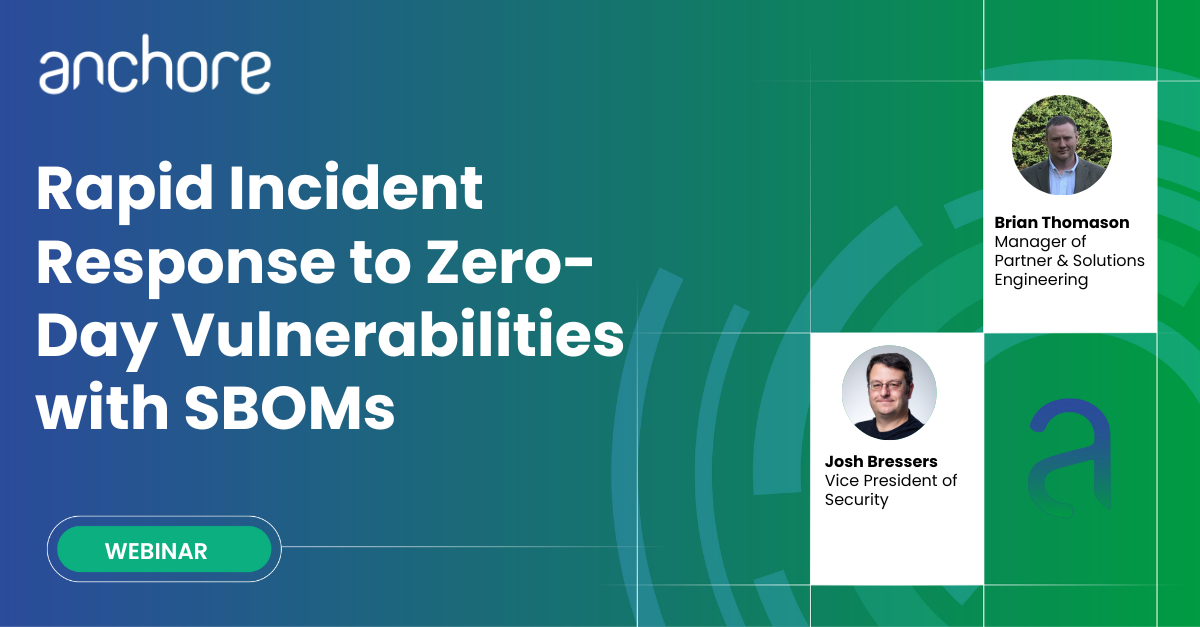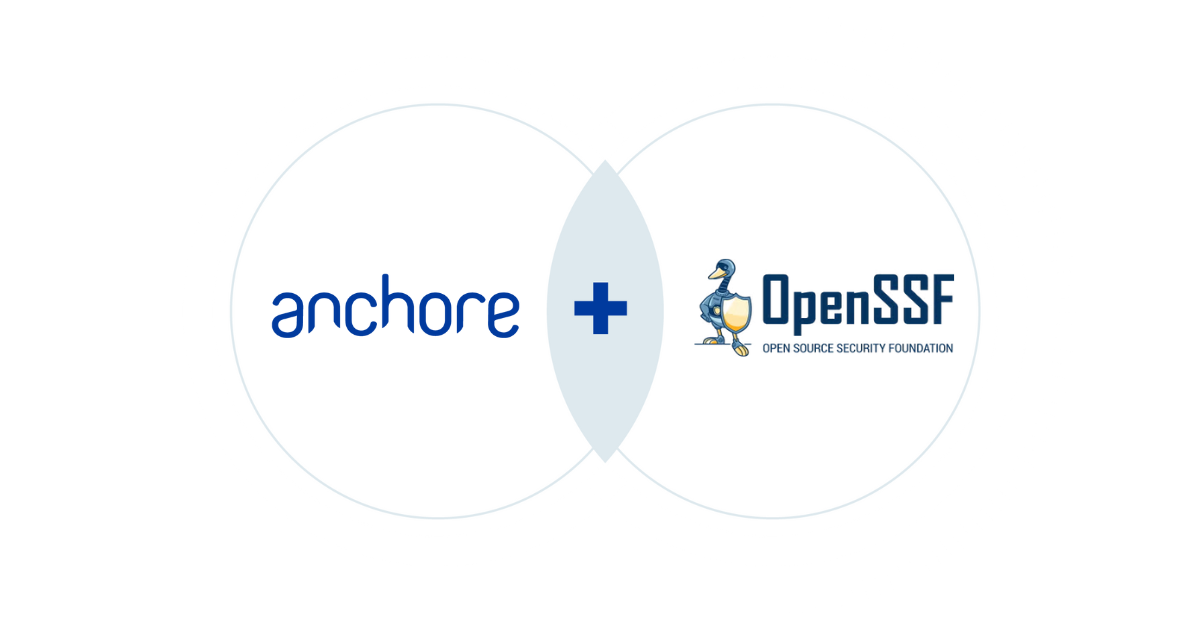Today we have released Anchore Enterprise 5.8, featuring the integration of the U.S. Cybersecurity and Infrastructure Security Agency’s (CISA) Known Exploited Vulnerabilities (KEV) catalog as a new vulnerability feed.
Previously, Anchore Enterprise matched software libraries and frameworks inside applications against vulnerability databases, such as, National Vulnerability Database (NVD), the GitHub Advisory Database or individual vendor feeds. With Anchore Enterprise 5.8, customers can augment their vulnerability feeds with the KEV catalog without having to leave the dashboard. In addition, teams can automatically flag exploitable vulnerabilities as software is being developed or gate build artifacts from being released into production.
Before we jump into what all of this means, let’s take a step back and get some context to KEV and its impact on DevSecOps pipelines.
What is CISA KEV?
The KEV (Known Exploited Vulnerabilities) catalog is a critical cybersecurity resource maintained by the U.S. Cybersecurity and Infrastructure Security Agency (CISA). It is a database of exploited vulnerabilities that is current and active in the wild. While addressing these vulnerabilities is mandatory for U.S. federal agencies under Binding Operational Directive 22-01, the KEV catalog serves as an essential public resource for improving cybersecurity for any organization.
The primary difference between CISA KEV and a standard vulnerability feed (e.g., the CVE program) are the adjectives, “actively exploited”. Actively exploited vulnerabilities are being used by attackers to compromise systems in real-time, meaning now. They are real and your organization may be standing in the line of fire, whereas CVE lists vulnerabilities that may or may not have any available exploits currently. Due to the imminent threat of actively exploited vulnerabilities, they are considered the highest risk outside of an active security incident.
The benefits of KEV enrichment
The KEV catalog offers significant benefits to organizations striving to improve their cybersecurity posture. One of its primary advantages is its high signal-to-noise ratio. By focusing exclusively on vulnerabilities that are actively being exploited in the wild, the KEV cuts through the noise of countless potential vulnerabilities, allowing developers and security teams to prioritize their efforts on the most critical and immediate threats. This focused approach ensures that limited resources are allocated to addressing the vulnerabilities that pose the greatest risk, significantly enhancing an organization’s security efficiency.
Moreover, the KEV can be leveraged as a powerful tool in an organization’s development and deployment processes. By using the KEV as a trigger for build pipeline gates, companies can prevent exploitable vulnerabilities from being promoted to production environments. This proactive measure adds an extra layer of security to the software development lifecycle, reducing the risk of deploying vulnerable code.
Additionally, while adherence to the KEV is not yet a universal compliance requirement, it represents a security best practice that forward-thinking organizations are adopting. Given the trend of such practices evolving into compliance mandates, integrating the KEV into security protocols can be seen as a form of future-proofing, potentially easing the transition if and when such practices inevitably become compliance requirements.
How Anchore Enterprise delivers KEV enrichment
With Anchore Enterprise, CISA KEV is now a vulnerability feed similar to any other data feed that gets imported into the system. Anchore Enterprise can be configured to pull this directly from the source as part of the deployment feed service.
To make use of the new KEV data, we have an additional rule option in the Anchore Policy Engine that allows a STOP or WARN to be configured when a vulnerability is detected that is on the KEV list. When any application build, registry store or runtime deploy occurs, Anchore Enterprise will evaluate the artifiact’s SBOM against the security policy and if the SBOM has been annotated with a KEV entry then the Anchore policy engine can return a STOP value to inform the build pipeline to fail the step and return the KEV as the source of the violation.
To configure the KEV feed as a trigger in the policy engine, first select vulnerabilities as the gate then kev list as a trigger. Finally choose an action.
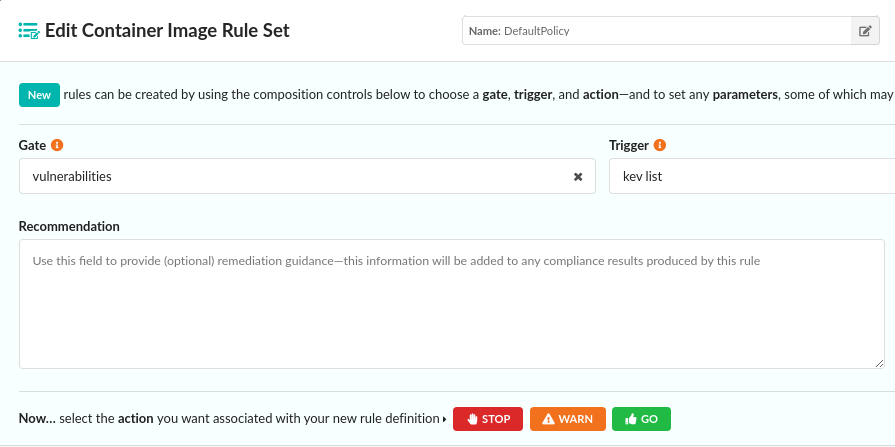
After you save the new rule, you will see the kev list rule as part of the entire policy.
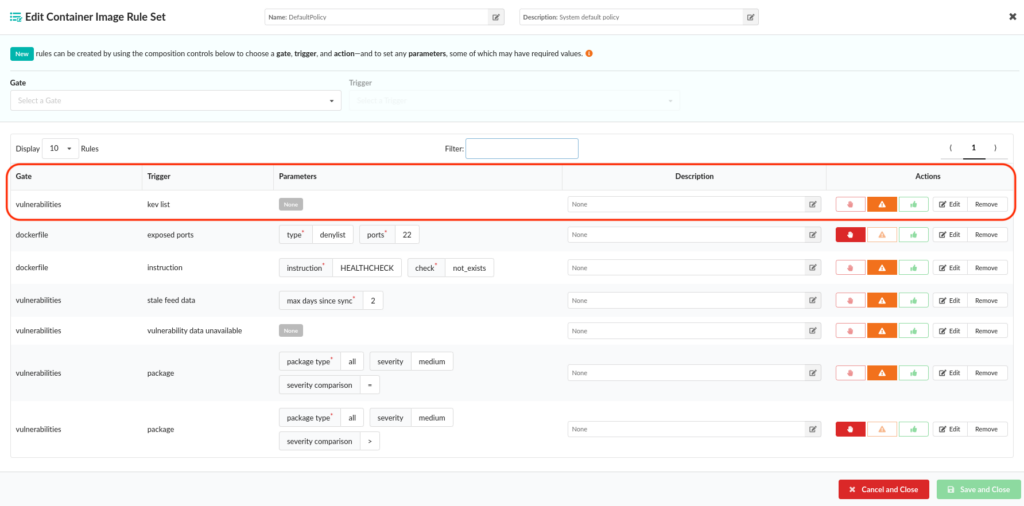
After scanning a container with the policy that has the kev list rule in it, you can view all dependencies that match the kev list vulnerability feed.
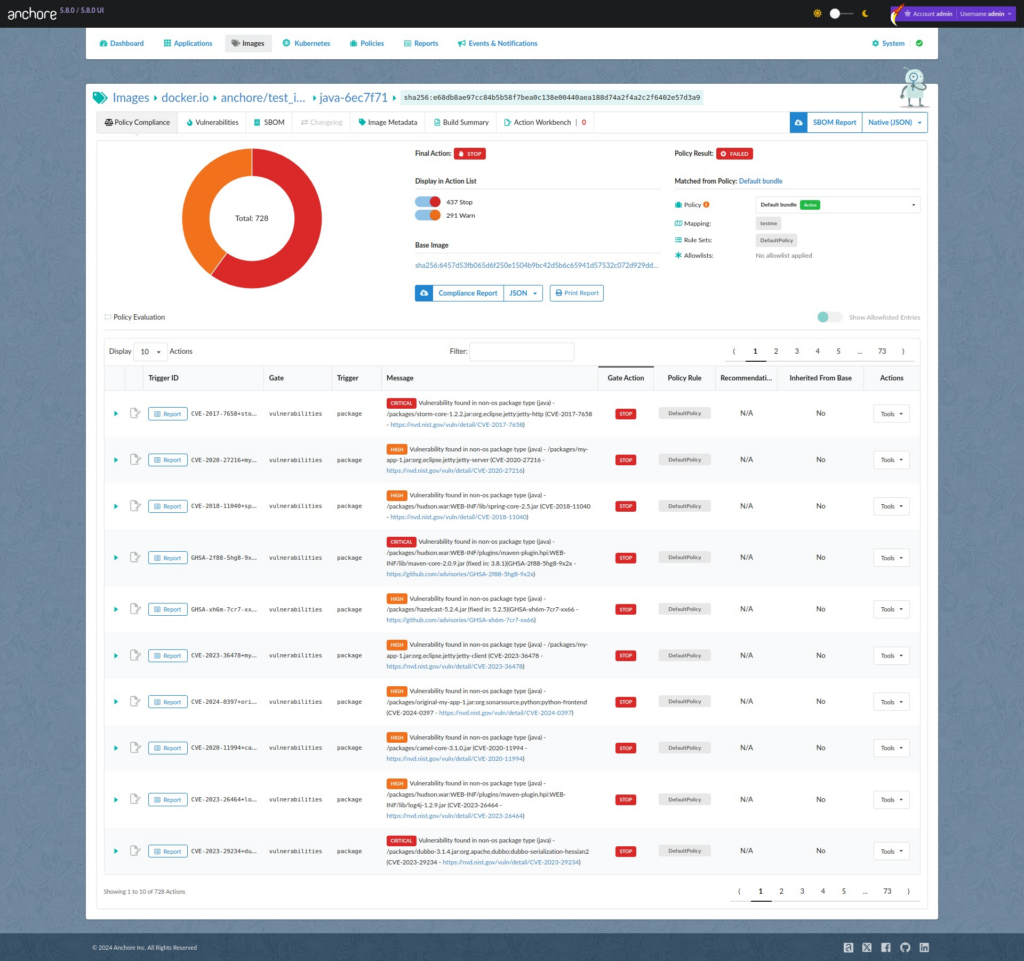
Next Steps
To stay on top of our releases, sign-up for our monthly newsletter or follow our LinkedIn account. If you are already an Anchore customer, please reach out to your account manager to upgrade to 5.8 and gain access to KEV support. We also offer a 15 day free trial to get hands on with Anchore Enterprise or you can reach out to us for a guided tour.

